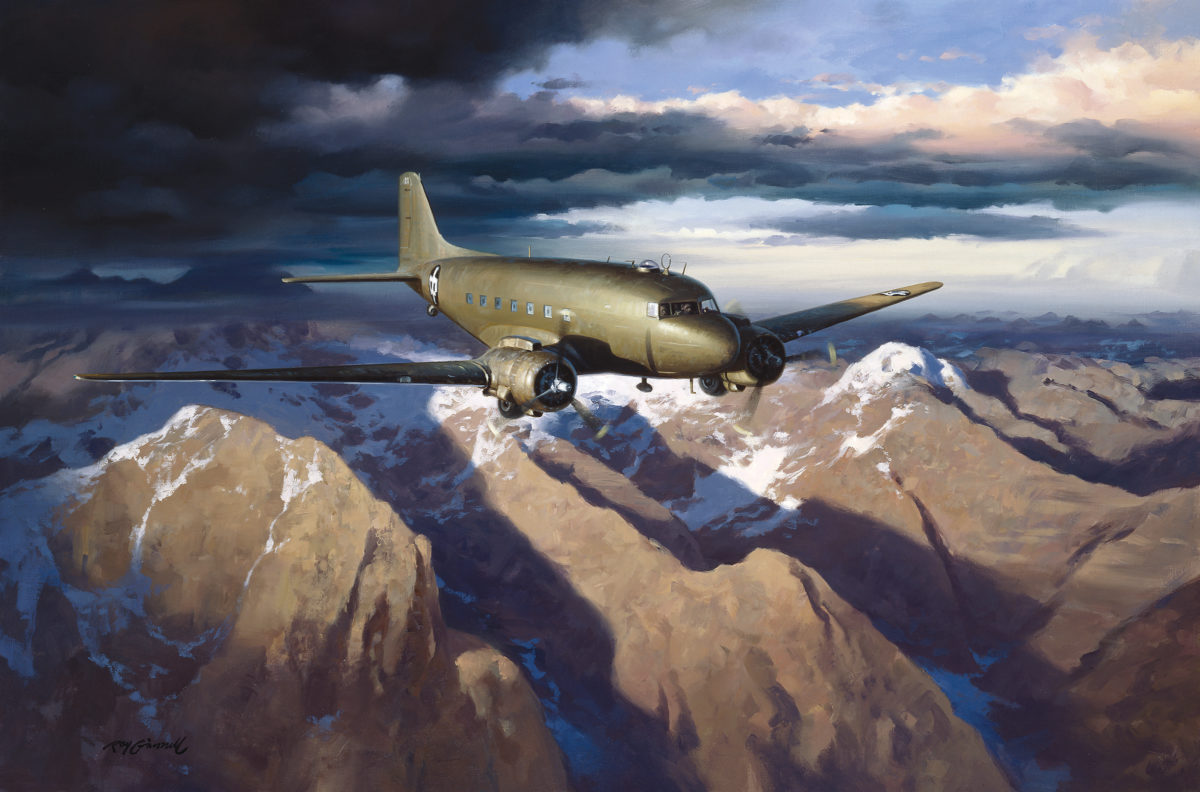His name was Jimmie Browne and he was my cousin, my neighbor, my role model and my hero. He was personable, good-looking, intelligent and brought joy to our families. His passion was flying—anything, anywhere—and apparently he was good at it. All that ended at age 21 on November 17, 1942, when Jim and a crew of three in a Douglas C-47 impacted the green slopes of a mountain called Cang Shan at 13,200 feet near Dali, China.
Jim was adopted by loving parents virtually at birth and was a happy boy in suburban Winnetka outside Chicago, but he was curious, restless and inclined to push the limits of his older but tolerant parents. They decided Jim should go to a military school and he ended up at Riverside Military Academy in Gainesville, Ga., where he was an average student, except in aviation. When he was first introduced to flying he knew he had found his calling. By the time Jim graduated, he had already received his private pilot and multiengine licenses.
That was in 1940, when the world was exploding, and he felt the need to do his part. After graduation from Riverside, Jim tried to enlist in the U.S. Army Air Corps’ flight training program, but it required at least two years of college. Next he told his parents he wanted to join the British Air Transport Auxiliary in England, ferrying aircraft to scattered British bases. He told his aunt, “I want to go, but I don’t want to kill anyone!” With his mother’s tearful consent Jim traveled to Canada and then on to England to begin his adventure. He flew Spitfires, Hurricanes, Blenheim bombers, trainers, amphibians—anything except four-engine bombers.
After 10 months he came home to Winnetka and soon found another flying job, ferrying U.S. aircraft to Africa for Pan American Airways. But before he got started with Pan Am, the Air Corps canceled the Pan-Africa contract to set up its own system. Meanwhile, however, Pan Am owned 45 percent of the China National Aviation Corporation. CNAC was a Chinese airline with an Air Corps contract to fly supplies on the Himalayan “Hump” route from India into China, and it needed pilots. Jim didn’t hesitate and joined five other newly recruited pilots headed to Asia in September 1942.
The six arrived in Dinjan, India, in early October and were quickly assigned their flying duties. Sadly, three of the six would be lost in the war. CNAC had pioneered flying the infamous Hump over the majestic but deadly Himalayan mountains in late 1941, finding routes that were acceptable to the reluctant U.S. Army Air Forces. The AAF had originally declared the routes too risky and it was only when President Franklin Roosevelt ordered the U.S. to join the CNAC flights from India into China that it began to beef up its supply effort.
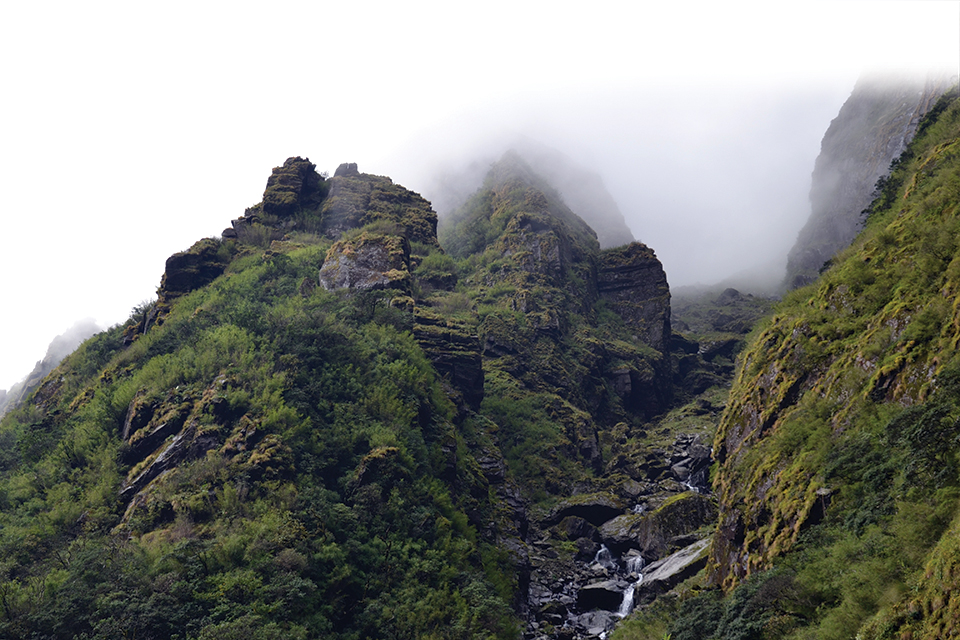
Jim joined the small cadre of fliers who struggled to take their underpowered, overloaded, worn-out transports over the mountains to help keep China fighting Japan. The route began on the flatlands of Assam, India, and crossed three major rivers—the Yangtze, Salween and Mekong—before reaching the Himalayas. Weather conditions were absurd: 100 mph winds at altitude, with updrafts and downdrafts that could render the lumbering C-47s uncontrollable without warning. There was little ground communication, radios were primitive and bailing out into jungle or mountain peaks was not an attractive option. But the pilots knew the risks and understood the importance of their daily missions.
Jim started flying the route on October 7, 1942. Forty-eight days later, on November 17, Harriet and Herbert Spencer Browne, living their comfortable life in their comfortable home in Winnetka, got the telegram that broke their hearts.
Pan Am vice president Harold Bixby wired simply that Jim’s C-47, CNAC no. 60, was overdue in Dinjan and presumed missing. Seven months later, on June 16, 1943, the U.S. State Department certified his death, and the Browne household descended into a cloud of grief.
In those days there were no search and rescue units to look for downed pilots. CNAC and AAF airmen were asked to look for wreckage as they flew their routes, but snow and high winds soon concealed lost aircraft. Jim’s C-47 joined the ranks of aircraft and crews lost on the pitiless Hump route, ranks that would tragically grow to unpredicted lengths in the coming months. CNAC no. 60 was virtually the first of those crews lost, as the war of logistics was just beginning in Asia.
Fast forward to about 1991, when I began to focus on uncovering the details of Jim’s disappearance. I was determined to find out what had happened to him. I soon found that the search would be doubly difficult since Jim was a civilian working for a Chinese airline, but in 1992 the U.S. government gave the CNAC pilots veteran status. However, the only information available about his fatal flight was the fact that CNAC no. 60 left Kunming after bringing in a load of supplies from its home base in Dinjan and was planning to return to Dinjan. After that, nothing.
Research in various repositories turned up little information and it was not until I discovered the website cnac.org that I started to learn about the airline. The webmaster, Tom Moore, had dedicated years to unearthing data on CNAC personnel. But even there, not much was known of Jim’s brief tenure.
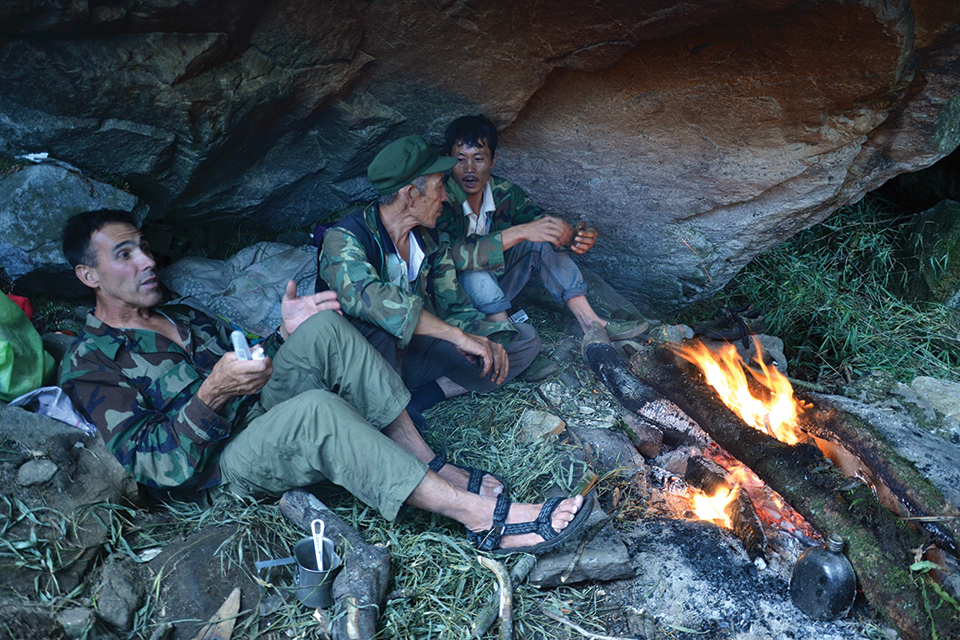
Then I met Clayton Kuhles of MIA Recoveries, Inc. at the 2003 CNAC Association reunion in San Francisco and we began to do some in-depth research into air activity in the flight path area. Kuhles had contacts in the region and probed them for any recollections of a late 1942 crash. Glimmers of information came back and we felt that we were getting somewhere.
Finally, in 2010, my wife Donna and I put together a tour of China’s Yunnan Province, covering some of the Chinese sites associated with CNAC. During the trip we had a real breakthrough. We learned that a young Chinese author, Liu Xiaotong, had written a book about the Hump flights. Of course it was in Chinese, but on one page, in English, were two names: James S. Browne and John J. Dean. Dean was the pilot and Jim the copilot of CNAC no. 60. Amazingly, the book included the last two radio transmissions of Jim’s final flight. In the first transmission the crew reported that they were approaching the mountains, with information about their position. The second call indicated the weather had closed in, winds were horrible and they were dumping the cargo.
When we came home, Kuhles found a report from a World War II pilot who had seen a crash site on Cang Shan mountain in the same region early in the war. That was enough to convince us to send an MIA Recoveries mission to explore the area. In September 2011 Kuhles, having pinpointed the probable location of the aircraft, led his expedition up the treacherous slopes of Malong Peak on Cang Shan. After three arduous ascents he found the site and identified the wreckage from the Douglas Aircraft construction number, 4681. Against all odds, he had found CNAC no. 60, but there was no evidence of the crew.
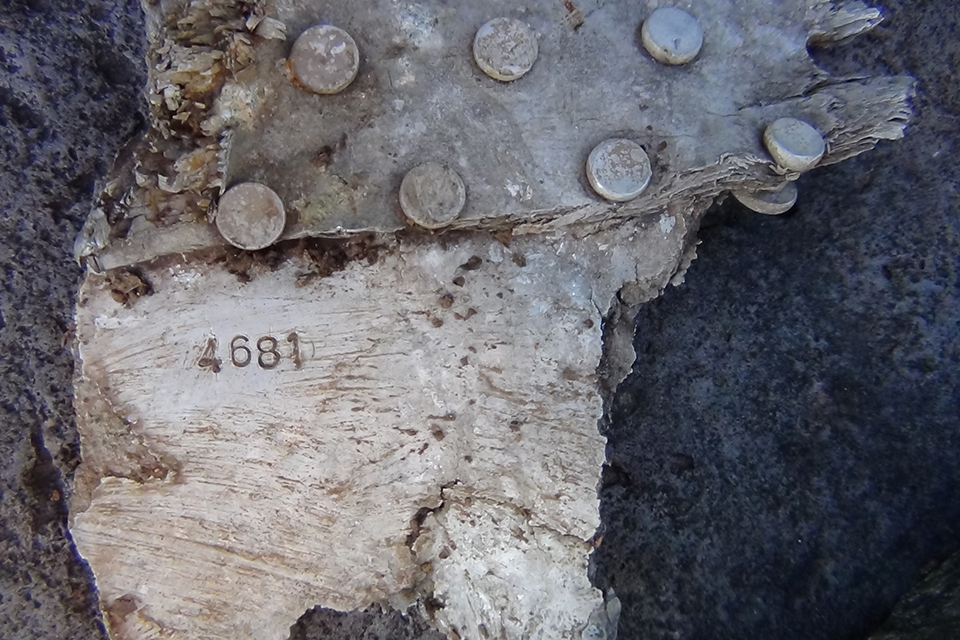
While we believed that the U.S. government was committed to bringing home MIAs from all wars, we found there were very few agencies, organizations or individuals committed to that mission. We tapped veterans organizations and contacted congressmen, who proficiently wrote letters but otherwise made little effort to help. We got some media coverage that rapidly died down, tried crowdfunding with little result and even approached some celebrities in vain. Despite support from the Chinese Embassy in Washington, we received no help.
We really thought the Joint POW/MIA Accounting Command (JPAC, then the government agency responsible for MIAs) would mount a search for the crew’s remains. After all, we had done our investigating, found the aircraft wreckage and reported its location to JPAC, all without help from our government. But they apparently had little interest in organizing an effort to visit the site and recover any remains.
It appeared the Chinese were blocking all attempts to reach the wreckage. First, they said local officials objected, yet I had met with local authorities on a 2015 trip and they were courteous and friendly to me and my son Tom. Then they said that they did not have sufficient manpower for a search due to the extensive celebration marking the anniversary of the end of WWII. Finally, they said it was too dangerous. We offered to have Americans do the search so no Chinese would be at risk, but they refused.
While this was discouraging, I thought the Defense POW/MIA Accounting Agency (which in 2015 took over JPAC’s mission) could counter these excuses, but from virtual transcripts of one meeting with the Chinese it was obvious DPAA was not pushing. As a DPAA official recently told me: “Not sure when we will be allowed to travel to or meet with Chinese. Things are a bit tense with that country as you no doubt have read in the news.”
Failing to get any help in examining the crash site for remains of the crew, I turned my efforts to other forms of recognition of Jim’s sacrifice. I applied for an Air Medal and a Distinguished Flying Cross, but my congressional representatives repeatedly informed me I needed an eyewitness to the event. When I applied for a gravestone at Arlington, I was told “he just doesn’t qualify.” At the time of his death, Jim was a civilian, but after the war the government gave veteran status to Pan Am pilots who served in combat areas and referred to them as “active duty designees.” Karen Durham-Aguilera, executive director of Arlington National Cemetery, was compassionate but firm: “I regret the tragic circumstances surrounding your cousin’s death. However, current burial legislation precludes active duty designees from ground burial and therefore eligibility for a government memorial marker.”
Finally, our family purchased a stone to be placed with his parents in Memorial Park Cemetery in Skokie, Ill. It is Jim’s only memorial in the U.S.
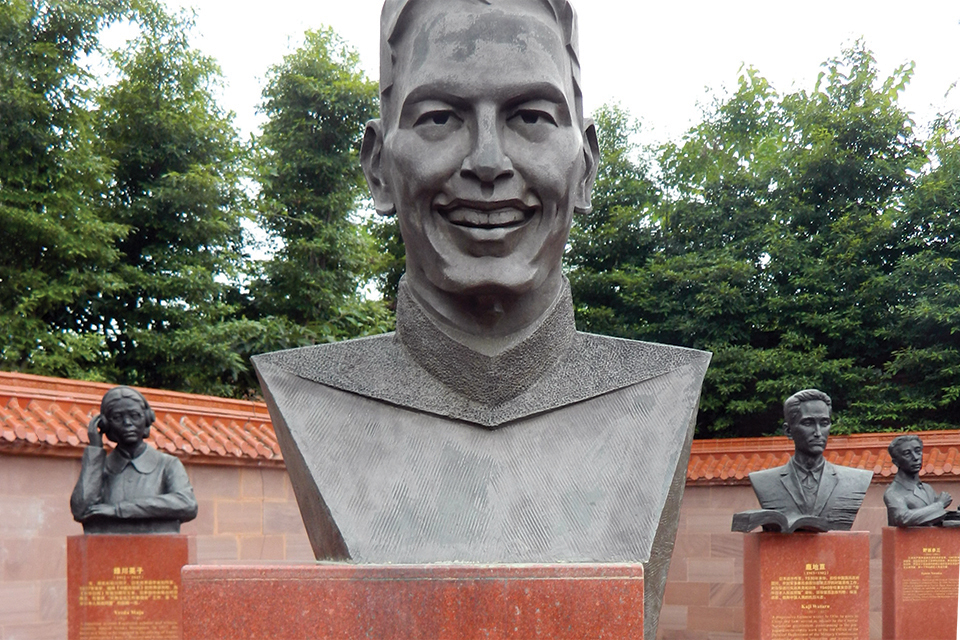
Interestingly, the Chinese remember and honor the heroism of the CNAC pilots and crewmen who risked and gave their lives for China. A bust of Jim was recently placed in the Square of Chivalrous Friends of China, at the Jianchuan Museum near Chengdu, with his smiling face looking out at the likes of Lt. Gen. Claire Chennault and other heroes of the war with Japan. In addition, he is listed, twice, on the impressive Monument to Aviation Martyrs in the War Against Japanese Aggression in Nanjing, and he has been added to the list of those lost on a CNAC plaque in Beijing’s National Aviation Museum. So, China remembers Jim and pays him homage.
But here in the U.S., in spite of MIA flags, MIA days, MIA testimonies and the slogan “You Are Not Forgotten,” Jim and the 83,000 remaining MIAs from all wars are in reality all but forgotten by the nation they served. With these MIAs still unaccounted for, the government agency responsible for their recovery and identification—DPAA—lists only an annual average of 200 MIAs identified during the past three years, and many of those were sailors from USS Oklahoma killed during the Pearl Harbor attack. It would appear efforts to recover MIA remains in distant lands have been stalled by lack of funding, lack of will, lack of effectiveness and, in our case, excessive bureaucracy.
Maybe we can’t bring them home, but we can still tell their stories.
Robert L. Willett is a U.S. Army WWII and Korean War veteran and retired banker who writes from Rockledge, Fla. He is the author of An Airline at War: Pan Am’s China National Aviation Corporation and Its Men and The Hunt for Jimmie Brown: An MIA Pilot in World War II China, which are recommended for further reading.
This feature originally appeared in the July 2021 issue of Aviation History. Don’t miss an issue, subscribe today!

